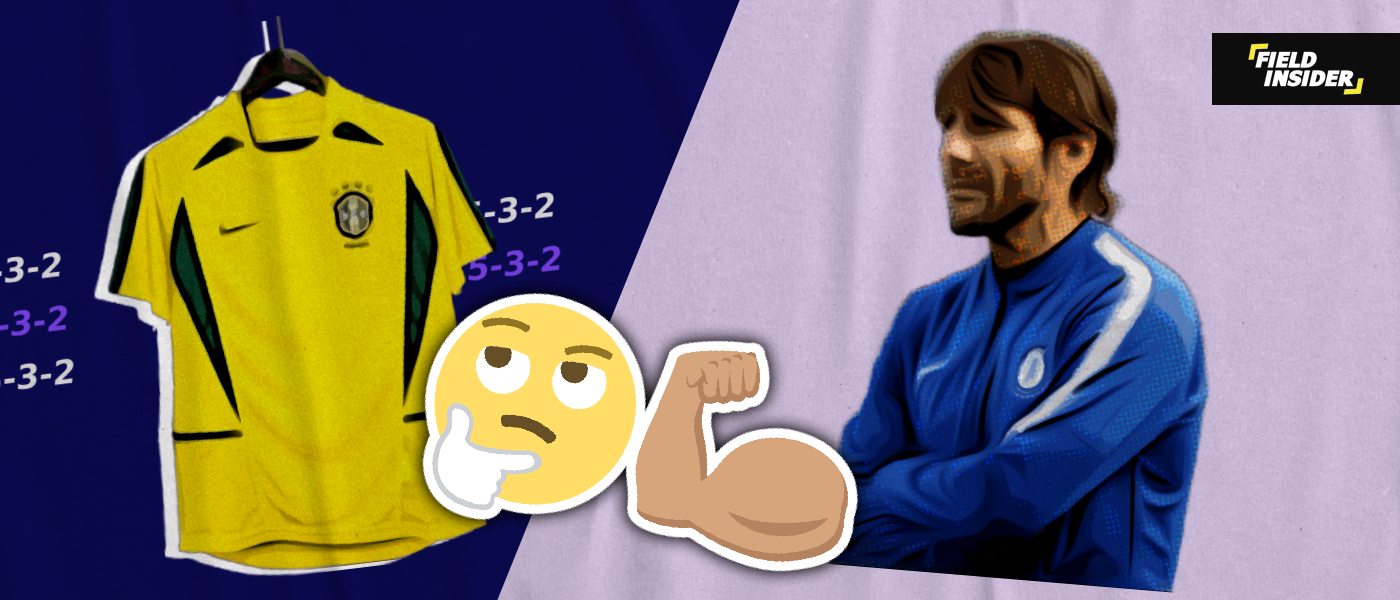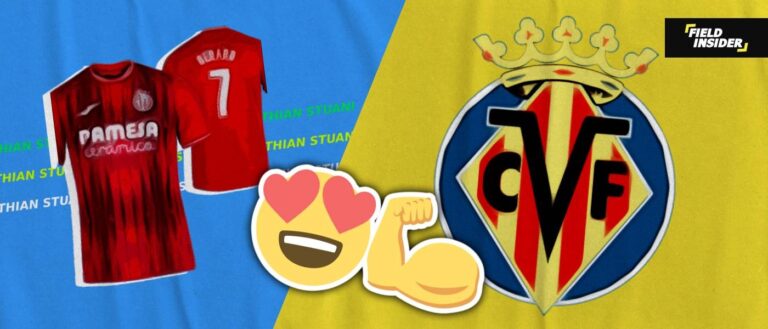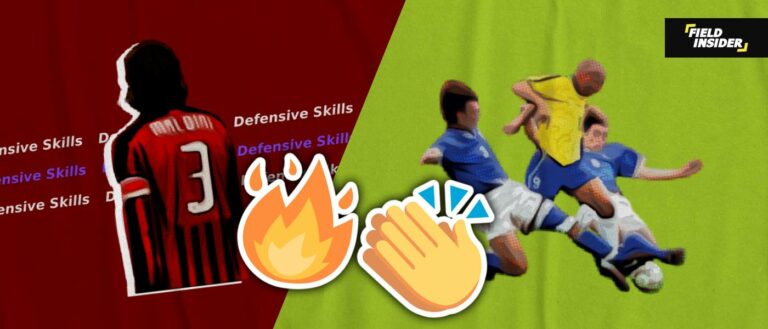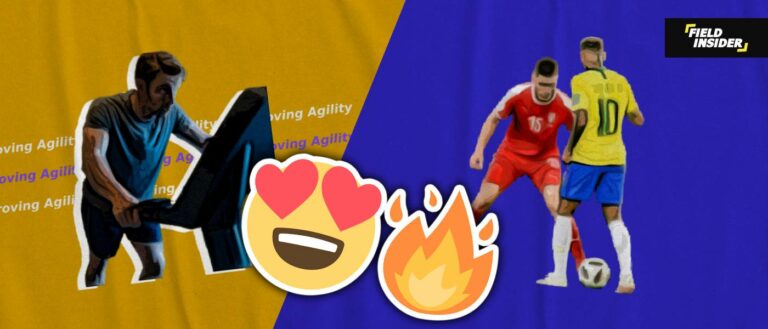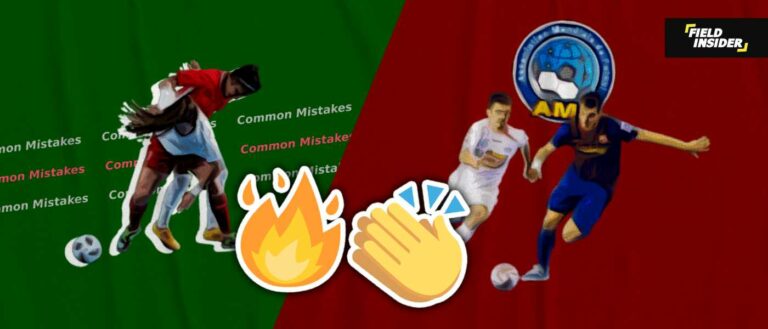The 5-3-2 Formation: Complete Handbook
The 5-3-2 soccer formation, known for its defensive strength and strategic flexibility, is a popular choice among top coaches. This handbook offers an in-depth exploration of the formation, from basic player roles to advanced tactical applications.
It is designed to aid coaches and players in understanding and implementing the 5-3-2 effectively. Whether you’re looking to shore up your defense or enhance your counter-attacking prowess, this guide provides essential insights and practical tips for mastering the formation.
Key Takeaways
| Key Aspect | Details |
|---|---|
| Basics of 5-3-2 | Focuses on five defenders, three midfielders, and two forwards for defensive solidity and counter-attack potential. |
| Advantages | Provides excellent defensive coverage and quick counter-attack capabilities. |
| Challenges | May struggle against possession-dominant teams; high demands on wing-backs’ stamina and coordination. |
| Implementation | Most effective against attacking teams or when needing to maintain a lead; relies on disciplined roles for each player. |
| Player Roles | Detailed roles include a sweeper-keeper, dynamic wing-backs, versatile midfielders, and cooperative forwards. |
| Tactical Adjustments | Allows shifts to 5-4-1 for enhanced defense or 3-5-2 for midfield dominance, adapting to game flow. |
| Training and Preparation | Emphasizes drills for position-specific skills, mental preparation for teamwork, and tailored fitness programs. |
Understanding the 5-3-2 Formation
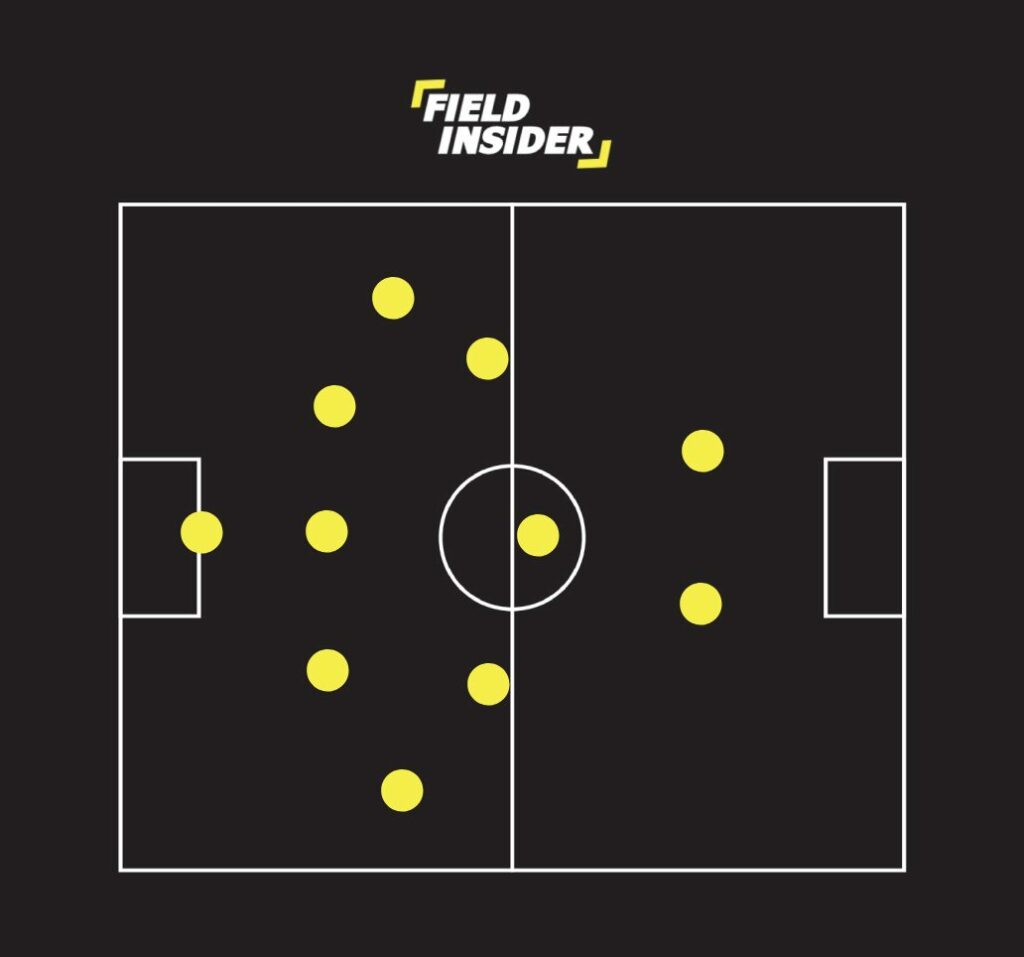
Formation Basics: Player Positioning and Roles
The 5-3-2 formation strategically positions five defenders, three midfielders, and two forwards. This layout emphasizes a robust defense paired with effective counter-attacking potential.
It requires precise coordination, as the roles and movements of each player are pivotal to both defending and initiating attacks effectively. Wing-backs, in particular, play a critical role by adding width and depth to the formation’s offensive efforts.
Historical Context and Evolution of the 5-3-2 Formation
Initially adopted to enhance defensive solidity, the 5-3-2 formation has evolved into a system that balances defensive security with offensive opportunities. Historical utilization by teams such as Italy in major tournaments showcases its effectiveness in competitive scenarios.
This evolution reflects a broader trend in soccer tactics, where flexibility and adaptability are crucial to success. Understanding this context is essential for modern coaches and players.
Advantages and Disadvantages of the 5-3-2 Formation

Robust Defensive Setup
The 5-3-2 formation is renowned for its solid defensive framework, making it highly effective against strong attacking teams. By employing five defenders, the team can effectively manage threats from various attacking channels. This provides a tough barrier for opponents to penetrate.
This setup is particularly advantageous during high-stakes games where defensive stability is paramount. The formation’s structure ensures that the defensive line remains compact and difficult to break down.
Potential for Quick Counter-Attacks
With the 5-3-2, teams can exploit quick counter-attacking opportunities. This advantage stems from the formation’s ability to transition swiftly from defense to attack. It utilizes the pace and positioning of the wing-backs and forwards.
When possession is regained, teams can launch rapid attacks, often catching opponents off balance while they are still in an offensive setup. This strategy leverages the speed and directness of the forwards, supported by midfielders who join the attack, creating sudden pressure on the opposing defense.
Challenges with Offensive Play
Despite its strengths, the 5-3-2 formation can sometimes hinder offensive capabilities, particularly in maintaining possession and building attacks. With only three midfielders and two forwards, teams might find it challenging to sustain pressure and create scoring opportunities.
This configuration can isolate forwards, requiring high levels of creativity and synergy to effectively break down organized defenses.
High Demands on Players’ Stamina and Discipline
Implementing the 5-3-2 formation demands considerable stamina and discipline from the players, especially the wing-backs. These players must continuously adjust their positioning between defense and attack, requiring not only physical endurance but also tactical awareness.
The midfielders, too, face the challenge of covering large areas of the pitch, supporting both defensive and offensive actions. This high demand can lead to fatigue, reducing the effectiveness of the formation as the match progresses.
Implementing the 5-3-2 Formation
Tactical Considerations: Strengths and Weaknesses
The implementation of the 5-3-2 requires a nuanced understanding of its tactical strengths and weaknesses. This formation excels in creating a tight defensive network that is difficult for opponents to penetrate. It is particularly effective against teams that favor wide attacking plays.
However, it can suffer from a lack of width if the wing-backs are not proactive. This can slow the team’s own offensive capabilities, making it crucial to train wing-backs to manage both their defensive responsibilities and offensive contributions effectively.
Suitable Scenarios for Using the Formation
The 5-3-2 is particularly advantageous in matches where defensive solidity is crucial, such as against top-scoring teams or when protecting a lead in crucial stages of a tournament. It also serves well in situations where a team might be outmatched in midfield and opts to rely on robust defense and quick breaks.
Understanding when to employ this formation can make the difference between outsmarting an opponent tactically. It can also mean being overrun in midfield due to the formation’s inherent limitations.
Key Principles for Successful Implementation
For the 5-3-2 formation to be successful, several key principles must be rigorously applied. First, the synchronization between the defensive line and the midfield is vital, ensuring that gaps do not develop when transitioning between defense and attack.
Secondly, the wing-backs must be highly disciplined. They should possess the stamina to maintain high levels of performance throughout the match, both in defensive duties and attacking support. Lastly, effective communication across all players is essential to maintain the formation’s structure.
Player Roles and Responsibilities in the 5-3-2 Formation

Goalkeeper: Sweeper-Keeper Role
In the 5-3-2 formation, the goalkeeper often takes on the role of a sweeper-keeper. Goalkeeper becomes an active part of the defensive strategy and play initiation. This role requires the goalkeeper to be alert to the play beyond the immediate defensive line and to distribute the ball quickly to initiate counter-attacks.
The ability to read the game and make quick decisions is crucial, making this a specialized position that might require specific training insights from resources like those on how to become a goalkeeper.
Defenders: Center-Backs and Wing-Backs
The three center-backs are the core of the formation’s defense, tasked with neutralizing opposition attacks and providing a solid base for the team. They must excel in aerial duels, man-marking, and intercepting passes.
The two wing-backs, on the other hand, have dual responsibilities: they must defend against opposition wingers and also surge forward to support the attack, providing width and crosses into the box. This dual role can be demanding, requiring players who are tactically aware and physically fit.
Midfielders: Central Midfielders and Wide Midfielders
The midfield trio in the 5-3-2 setup consists of one defensive midfielder and two central midfielders who may have to cover wide areas occasionally. The defensive midfielder is crucial for breaking up opposition plays and shielding the backline.
These roles demand a combination of tactical intelligence, stamina, and skill in ball control and distribution.
Forwards: Strikers and Supporting Attackers
The two forwards in the 5-3-2 formation must work closely to pressure the opponent’s defense and to capitalize on scoring opportunities. Typically, one forward may play slightly deeper as a supporting striker. They helps to link play with midfielders and creating spaces for the main striker.
The main striker, expected to be the primary goal threat, needs to excel in finishing, positioning, and exploiting gaps in the defense. The interplay and understanding between these two roles are crucial for the formation to succeed offensively and require careful coordination and training.
Case Studies of Successful Teams Using the 5-3-2
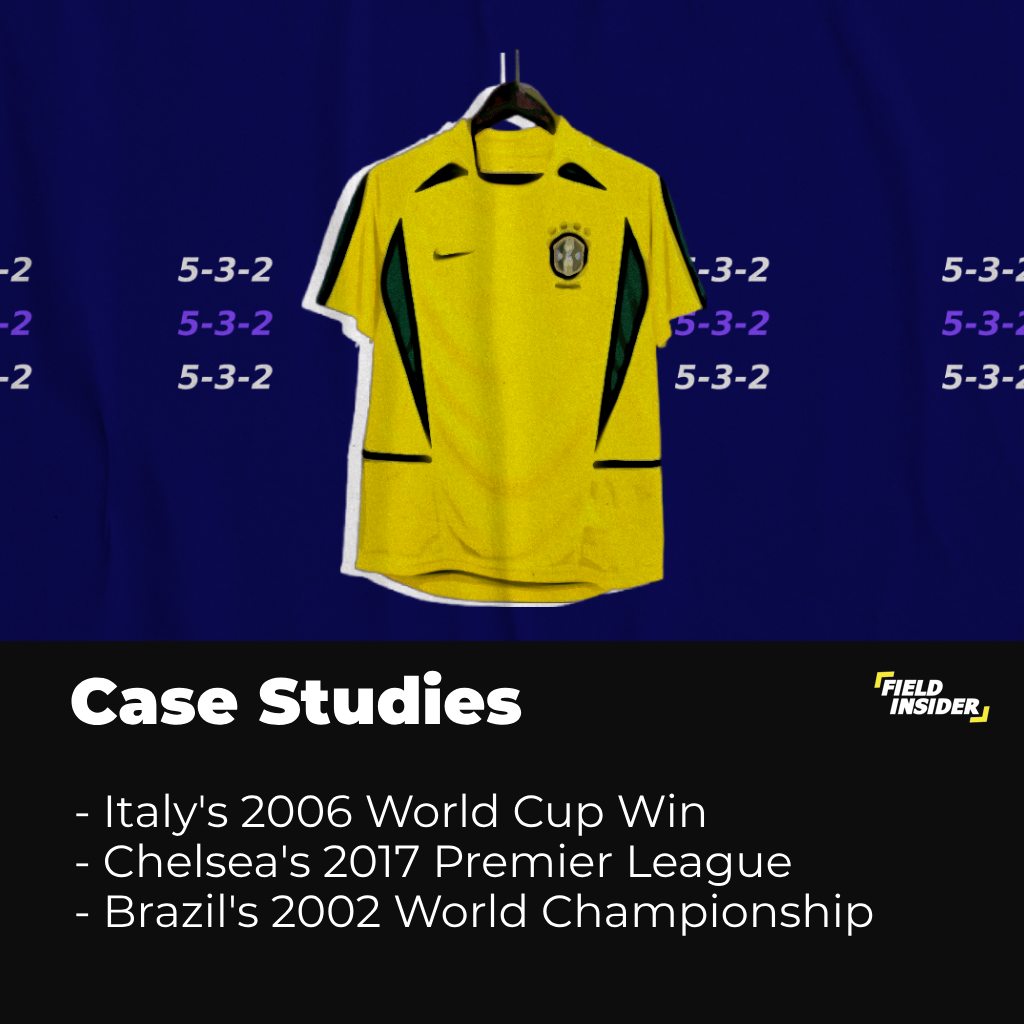
Italy’s 2006 World Cup Triumph
One of the most notable examples of the 5-3-2 formation’s success at the highest level is Italy’s 2006 World Cup victory. Under coach Marcello Lippi, the Italian squad utilized a 5-3-2 setup that emphasized defensive solidity paired with quick counter-attacks.
This strategy was pivotal in their path to victory, showcasing how a well-implemented 5-3-2 formation can provide both a strong defensive base and effective offensive thrusts through precise and timely breaks, ultimately leading Italy to clinch the World Cup title.
Chelsea’s 2016-2017 Premier League Season
Chelsea’s transformation under Antonio Conte during the 2016-2017 Premier League season is another excellent case study of the 5-3-2 in club football. Switching to a 5-3-2 helped Chelsea secure the Premier League title, with the formation providing a balance between a defense and a dynamic attack.
This adaptation not only revitalized the team’s playing style but also demonstrated the formation’s effectiveness in a domestic league context, catering to both defensive rigidity and fluid attacking movements.
Brazil’s 2002 World Cup Victory
The 5-3-2 formation is also famously credited with carrying Brazil to their record fifth World Cup win in 2002. Under Luiz Felipe Scolari, Brazil effectively used this formation to blend their traditional flair with tactical discipline, allowing them to dominate on the world stage.
This approach showcased the formation’s ability to accommodate skillful attacking play without compromising on defensive stability, highlighting the adaptability of the 5-3-2 to various team styles and football philosophies.
Enhanced Defensive Play with the 5-3-2 Formation
Recent findings from the study “Defending in 4-4-2 or 5-3-2 formation? Small Differences in Footballers’ Collective Tactical Behaviours” offer an analytical edge to the 5-3-2 formation’s defensive capabilities.
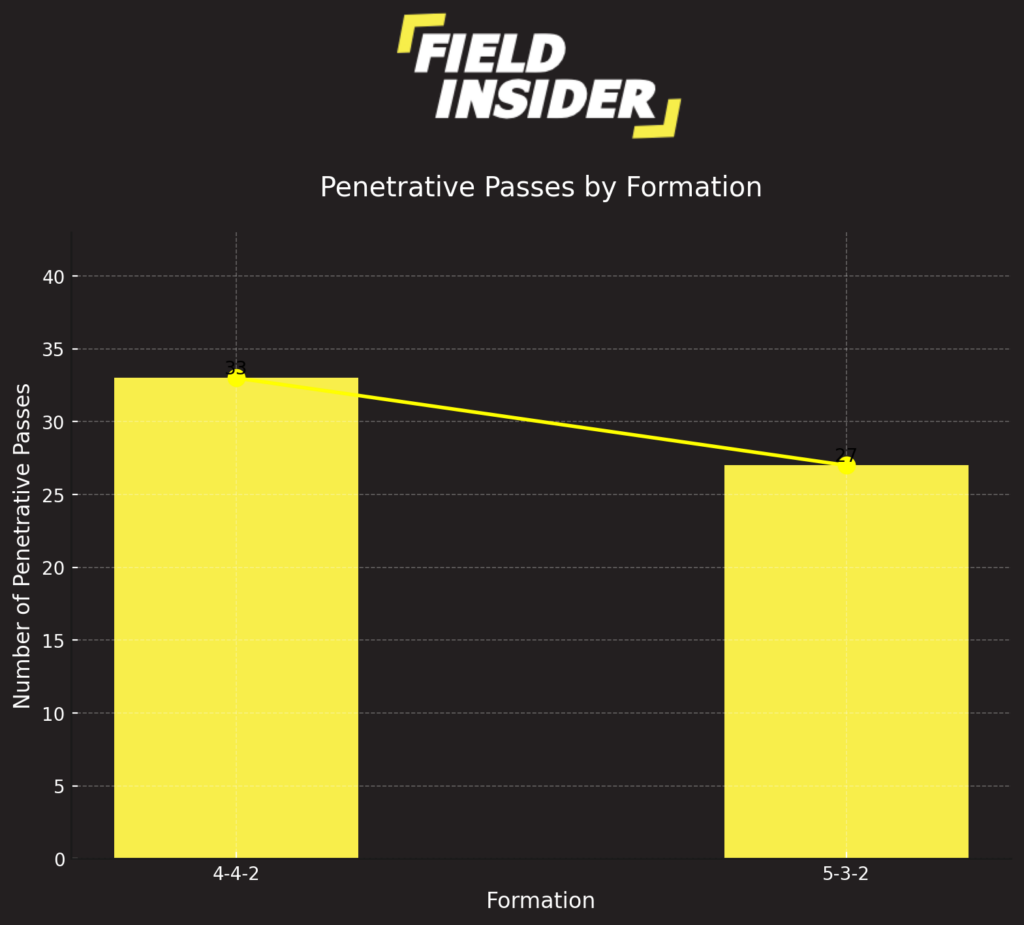
As depicted in the chart below, teams utilizing the 5-3-2 formation allowed significantly fewer penetrative passes. This reduction underscores the formation’s tighter defensive network, which can disrupt opponents’ attacking plays more effectively than the traditional 4-4-2 setup.
By opting for the 5-3-2 formation, teams may gain a strategic advantage, reinforcing their defense against the incisive movements often seen in modern football. The chart not only visualizes these strategic nuances but also cements the 5-3-2 formation as a formidable defensive tactic in competitive play.
Training and Preparation for the 5-3-2 Formation
Drills and Exercises Tailored to the 5-3-2 Formation
| Area of Focus | Drill/Exercise Description | Purpose |
|---|---|---|
| Defensive Cohesion | Back-line Positioning Drill: Practice moving as a unit, responding to ball movement across the pitch. | Enhances the back five’s ability to maintain formation and adapt to shifting play. |
| Midfield Connectivity | Midfield Transition Game: Quick switches from defense to attack in small-sided games. | Improves the midfield’s ability to link play and support both defensive and attacking phases. |
| Wing-Back Endurance | Wing-Back Overlap Sprints: Repeated sprint drills mimicking wing-back runs from deep defensive positions to attacking thirds. | Boosts stamina and speed for sustained performance in dual roles. |
| Transition Efficiency | Counter-Attack Scenarios: Simulate fast breakaways after regaining possession. | Sharpens the team’s ability to quickly transition from defense to attack, exploiting counter opportunities. |
| Communication Skills | Team Shape Communication Drill: Players call out their movements and adjustments in live-play scenarios. | Enhances on-field communication, ensuring effective coordination and positioning. |
Mental Aspects: Communication and Teamwork
The mental preparation for playing in a 5-3-2 formation is as vital as the physical and tactical aspects. Players must develop strong communication skills to ensure seamless shifts between defensive and attacking phases.
Teamwork exercises that foster understanding and trust among teammates can greatly enhance on-field coordination. This mental and communicative preparation is essential, especially for formations as structurally complex as the 5-3-2, where each player’s role is interdependent on the others’ performance.
Fitness Requirements for Players
The physical demands of the 5-3-2 formation are significant, particularly for the wing-backs. They need to perform both defensive duties and support the attack. Fitness training should therefore focus on enhancing stamina, speed, and agility.
Position-specific fitness regimes are recommended, with a focus on cardiovascular and strength-training exercises tailored to the unique demands of each role.
Conclusion
In conclusion, mastering the 5-3-2 formation involves understanding its complex structure and strategic nuances. This handbook has covered the essential aspects, from player roles and tactical adjustments to specific training drills and historical success stories.
Adopting this formation can provide teams with robust defensive capabilities and potent counter-attacking potential. Further development can be achieved through continuous learning and practical application in diverse match scenarios.


